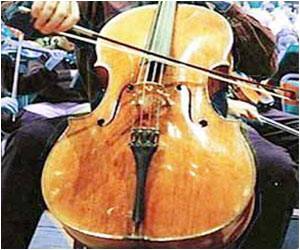FGF20 gene required for proper development of the mouse inner ear has been identified by researchers.

The results, published online Jan. 3 in PLoS Biology, show that disabling the gene causes a loss of outer hair cells, a special type of sensory cell in the inner ear responsible for amplifying sound. While about two-thirds of the outer hair cells were missing in mice without FGF20, the number of inner hair cells, the cells responsible for transmitting the amplified signals to the brain, appeared normal.
"This is the first evidence that inner and outer hair cells develop independently of one another," says first author Sung-Ho Huh, PhD, postdoctoral research associate. "This is important because most age-related and noise-induced hearing loss is due to the loss of outer hair cells."
As such, Ornitz and Huh speculate that FGF20 signaling will be a required step toward the goal of regenerating outer hair cells in mammals, the only vertebrates incapable of such feats of hearing restoration.
"Birds and, in fact, all vertebrates other than mammals have the ability to regenerate hair cells," says co-author Mark E. Warchol, PhD, professor of otolaryngology. "Understanding how mammals differ from the rest is a topic of great interest."
The FGF20 gene codes for one member of a family of proteins known as fibroblast growth factors. In general, members of this family are known to play important and broad roles in embryonic development, tissue maintenance and wound healing.
Advertisement
"In mice, the precursor cells that can become outer hair cells must be exposed to the FGF20 protein at an early stage," Ornitz says. "After embryonic day 14, it doesn''t matter if they see the protein. It''s too late for them to become outer hair cells."
Advertisement
"We''re literally doing those experiments right now," Warchol says. "But FGF20 has been shown to be involved in other kinds of regeneration like the regrowth of zebrafish fins."
Ornitz and his colleagues also see evidence that mutations in FGF20 may play a role in human deafness. A genetic region known as DFNB71 has been associated with congenital deafness in a few human families.
"And FGF20 is right smack in the center of that region," Ornitz says. "Based on our work, we are predicting that these families will have some sort of mutation in the FGF20 gene. It hasn''t been found yet, but a group at the Baylor College of Medicine is sequencing this region of the genome to look for FGF20 gene mutations."
Huh SH, Jones J, Warchol ME, Ornitz DM. Differentiation of the lateral compartment of the cochlea requires a temporally restricted FGF20 signal. PLoS Biology. Jan. 3, 2012.
This work was funded by the Washington University Department of Developmental Biology, the Hearing Health Foundation, Action on Hearing Loss Foundation, contributions from Edward and Linda Ornitz, and grants from the National Institute on Deafness and Other Communication Disorders (NIDCD) and the National Institutes of Health (NIH).
Source-Newswise













